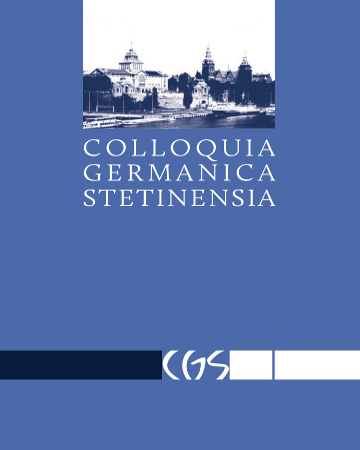







| Authors: |
Jarosław
Aptacy

Uniwersytet im. Adama Mickiewicza Poznań |
| Keywords: | brand name translation German-Chinese |
| Data publikacji całości: | 2022 |
| Page range: | 18 (99-116) |
| Downloads ?: | 211 |
| 1. | Aptacy, Jarosław. „Laowai und Waiguoren – zur Wahrnehmung des ‚Fremden‘ in China früher und heute“. tekst i dyskurs – text und diskurs 14 (2020): 19–34. |
| 2. | Biederman, Irvin, Yao-Chung Tsao. „On Processing Chinese Ideographs and English Words: Some Implications from Stroop-Test Results“. Cognitive Psychology 11 (1979): 125–132. |
| 3. | Chan, Allan K. K., Yue Yuan Huang. „Brand naming in China: a linguistic approach“. Marketing Intelligence & Planning 15/5 (1997): 227–234. |
| 4. | Dong, Lily C., Marilyn M. Helms. „Brand name translation model: A case analysis of US brands in China“. Marketing, Intelligence and Planning 19.5 (2001): 99–115. |
| 5. | Dtv-Lexikon. Gütersloh / München: Wissen Media Verlag GmbH, 2006, Bd. 14. |
| 6. | Duanmu, San. The Phonology of Standard Chinese. Oxford: University Press, 2000. |
| 7. | Fan, Ying. „The national image of global brands“. Journal of Brand Management 9 (2002): 180–192. |
| 8. | Hoosain, Rumjahn, Charles E. Osgood. „Processing times for English and Chinese words“. Perception & Psychophysics 34 (1983): 573–577. |
| 9. | Kotler, Philip, Kevin Lane Keller. Marketing. Poznań: Rebis, 2012. |
| 10. | Künstler, Mieczysław. Języki chińskie. Warszawa: Dialog, 2000. |
| 11. | Lee, Yih Hwai, Kim Soon Ang. „Brand name suggestiveness: a Chinese language perspective“. International Journal of Research in Marketing 20 (2003): 323–335. |
| 12. | Polzin, Javier Morato, Bernd Kirchner, Achim Pollert. Das Lexikon der Wirtschaft: grundlegendes Wissen von A bis Z. Bonn: Bundeszentrale für politische Bildung, 2009. |
| 13. | Siniarski, Jan, Ewa Zajdler. „Kulturowy aspekt kodowania informacji w języku i piśmie – nazwy handlowe wiodących marek zagranicznych we współczesnym języku chińskim“. In: Zrozumieć Chińczyków. Kulturowe kody społeczności chińskich, hrsg. v. Ewa Zajdler, 131–174. Warszawa: Dialog, 2011. |